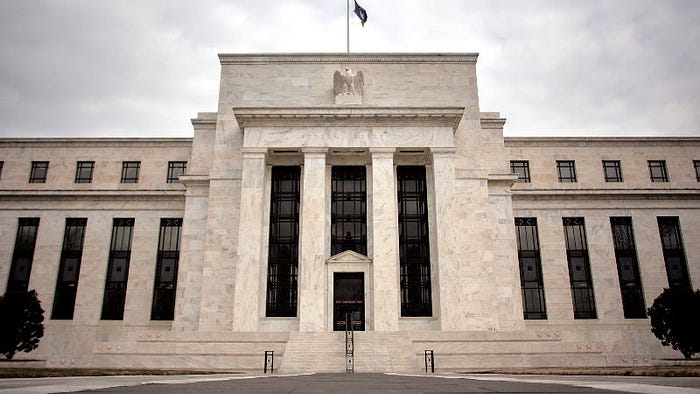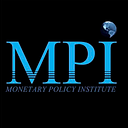Banking Crises and Central Banks
Jalal Qanas
Assistant Professor of Economics, College of Business and Economics, Qatar University
&
Malcolm Sawyer
Emeritus Professor of Economics, University of Leeds, UK

“Undoubtedly, surveillance analysts in the supervision department of FRB SF were well aware of the deteriorating securities portfolio, yet appeared to take no action. Why not? One real possibility is that they were told to stand down because one of the members of the board of directors of FRB-SF was none other than SVB’s CEO Greg Becker.”
After the 2008 ‘unpredictable’ Great Financial Crisis (GFC), central banks and financial regulators have assured us that the causes and issues of financial instability had been addressed. Having Basel III requirements and other financial regulations in place was supposed to make banks more secure and solid. More recently, many central bankers, regulators and auditors assured us of the soundness of the financial and banking sectors.
However, recent financial events like the collapse of Silicon Valley Bank (SVB) and Signature Bank, the rescue of First Republic, as well as the enforced merger of Credit Suisse with USB (and on minor level the acquisition of SVB UK by HSBC for £1), have again raised the question of the financial fragility of the global financial system. It also raises many other questions and in this short piece, our focus is on the impacts of monetary policy on financial stability and the role played by regulators.
The monetary policies pursued by central banks over the past three years or so have created some severe problems (in mind, we are especially thinking of the policies of the Federal Reserve, the European Central Bank and the Bank of England). A large increase in financial assets purchased under Quantitative Easing contributed to substantial increases in central bank reserves held by commercial banks. After an era of very low interest rates, and then from March 2022 onwards led by the Federal Reserve, central banks started to raise policy interest rates. In the second half of 2022 and into 2023, policy interest rates were raised on a frequent basis in pursuit, it was generally claimed, of taming inflation, which was rising into double digit range as global energy and food prices rose. While many central bankers agree that the environment of high inflation that the world has faced in recent months is due to supply side and cost push factors, they are still fighting inflation as a demand pull problem by raising short term interest rates.
The economic model on which inflation targeting is based is a rather simplistic one on which increases in interest rate led to lower aggregate demand, which is viewed as putting downward pressure on inflation. The relative ineffectiveness of this approach is well-known. The effects of interest rate rises are more pronounced on output than on prices, and the effects of prices are minimal. Recent simulations based on a number of central bank econometric models by ECB staff report provide a range of estimates of the effects of a 100 basis points rise in interest rates — the largest being to lower inflation by 0.4 per cent, and output by 1.25 per cent (see here). Further, much of the effect of an individual central bank raising interest rates comes through the exchange rate, and this effect is then much reduced when several central banks raise interest rates at broadly the same time.
There are many important omissions in this inflation targeting intellectual framework. There is, for example, no consideration of effects of monetary policy on inequality. In the current circumstances a particularly important omission is the effects of interest rate changes (particularly of the order of magnitude seen), which has been seen as interest rates rise from circa 0.1 to 0.25 per cent to circa 4 per cent on banks profits and asset prices. There are, of course, other important omissions on the effects on higher interest rates on debt and costs of debt at the personal level, the corporate level and the national level. These effects of higher interest rates could be regarded as collateral damage from the pursuit of inflation targeting, though it throws doubt on a counter-inflation policy, which comes with potential very high costs (in addition to higher unemployment).
The effects of the rising policy interest rate have differed across banks. On the one hand, commercial banks profit from the rise in the interest rate paid on bank reserves with the central bank. There can also be significant effects on government borrowing costs. On the other hand, the market price of government bonds declines sharply. The decline in those bond values had considerable impacts on banks who held a significant part of their assets as bonds, and had impacts when bonds needed to be realized, as for example to meet withdrawal of deposits. A particular case in point is SVB, who raised funds from demand deposits, investing them into longer-term assets, creating a classic liquidity mismatch. That is what all banks do, and it is the job of the banks’ risk managers and the regulators to minimize the dangers created by such a mismatch. What’s more, SVB appeared to play it safe by investing deposits into US government bonds, which is considered by the financial market and US regulators to be risk-free assets for credit purposes.
The case of SVB is quite particular, it was catered to venture capital firms and their clients, primarily tech start-up firms and concentrated in the San Francisco area. This is an extremely risky group of borrowers and geographically concentrated. In addition, SVB was growing extremely fast. As of year-end 2018, the bank reported $56 billion in total assets — and then almost doubling from $116 billion at the end of 2021 to $216 billion at the end of 2022, making it the 16th largest bank in the US and the second largest bank failure in US history. SVB was able to fund its assets primarily using large deposits from start-ups, venture capitalists, fintech investors and other large investors to which it lent, more than 90% of which exceeded the $250,000 limit on deposit insurance. These clearly were “hot money” likely to “run” in the event of adverse news, which is exactly what happened. The danger plays out when the bank’s clients all wish to take their money out of the bank at the same time — a classic bank run. This process is, of course, familiar from the global financial crisis, not the least the Northern Rock bank run in October, 2007. Behind this fancy facade, depositors never really know how safe their money is, and when fear starts to spread, depositors run to get their money out.
The extent of bank deposits held on a short-term basis and eligible for immediate withdrawal, and the speed of spread of ‘news’ triggering large withdrawals, have put a number of banks in position of being unable to repay depositors. This is perceived to have been added to by the degree to which the deposits that were held were much greater than the compensation limits (93 per cent in case of SVB). The ways in which the authorities have responded to the banks in crisis, for instance through explicit guarantees on insurance of all deposits or through encouraged ‘fire sales’ (SVB UK, Credit Suisse) with implicit guarantees of deposits, raises questions on the ways in which in effect all bank deposits are being guaranteed. It also raises issues of the ways in which the operations of banks have left them much more vulnerable to rapid withdrawals. The arguments for deposit insurance will need to be re-examined. The original purpose of de-risking assets of small savers and the operations of the payments system have been lost. Perhaps it is time for a central bank digital currency, which would provide a payments system that would not be subject to bank runs (though would face issues of the ways in which bank loans are provided).
There were many red flags indicating that SVB (and others) was an extremely risky bank that should have been under scrutiny of bank regulators, who should have insisted on changes to its loans, securities, and deposit portfolios to reduce risk. The primary regulator of SVB was The Federal Reserve, specifically, the FRB of San Francisco, where SVB was headquartered. Undoubtedly, surveillance analysts in the supervision department of FRB-SF were well aware of the deteriorating securities portfolio, yet appeared to take no action. Why not? One real possibility is that they were told to stand down because one of the members of the board of directors of FRB-SF was none other than SVB’s CEO Greg Becker, who resigned (or was forced out) on Friday — the same day regulators closed SVB. The risk SVB faced was not default but rising interest rates. It bought its bonds in a world where interest rates had been very low for long by many central banks to stimulate the economy. Unsurprisingly, in the process, the central banks did not sufficiently appreciate new types of risk created by the low interest policy. As firms and banks adapted to the low interest rates, they eventually became dependent on low interest rates so that they would face significant difficulties when the rates increased, something that was inevitable. In addition, Dodd-Frank stress tests didn’t consider a rising interest-rate environment. Another problem is the question of stress tests that failed to predict SVB collapse, as they don’t consider interest rate risk to more than 2–3% increase. Even that supervisors already run stress tests to catch problems such as SVB, but top regulators refused to act.
During a period of very low interest rates, T-Bills became as liquid as money, in addition, holding government bonds is considered as risk-free assets in the financial markets; on average, US banks have 25% of their total assets as government bonds as HTM (Hold To Maturity), so they could face similar risk following SVB. Furthermore, the critical risk will be coming from long-term loans, mortgages, and commercial real estate loans, as most of these debts were supplied at rates around 1%; as such, with rates now at 5%, the true value of these loans will fall dramatically. If we account for this, the unrealized losses of most US banks will exceed 70–80% of their capital according to some studies.
As long as central bankers are acting to fight inflation through an increase in interest rates regardless of financial stability, we will end up with triple problems: recession, a financial crisis with little impact on inflation. Therefore, it is time to push for a structural change in central banking mentality, towards a more realistic progressive approach that connects central banks to objectives such as financial stability, inequality, climate change and sustainability, and most importantly the wellbeing of society.
